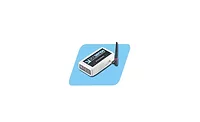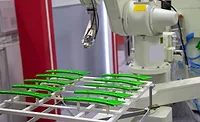Five Ways Your Old Paint System Costs Money and Jeopardizes Business
1. Older paint systems cannot deliver higher quality
If your paint system is more than five years old, it cannot compete with the capabilities of today's equipment. Advances in paint system technology have opened up opportunities to improve the finish, lower reject rates and reduce material costs. While finish quality is often subjective, you can and should measure your reject rate and your paint or coating costs. This will give you a benchmark for evaluating the potential ROI of a new system.
Many companies discover an additional benefit to dramatically lowering the cost of material waste. Customers do notice the higher quality finish, and often they equate it with higher overall product quality. This helps strengthen customer loyalty and build your brand's reputation.

2. Older systems cannot deliver high levels of automation
Even if your old paint system has some automated functions, it cannot compete with today's new systems. Typically, older systems require workers to load parts into the equipment and unload the finished parts. Often, workers also have to transfer parts between finishing stages. And every worker represents a significant burden on your manufacturing costs.
Recent advances in robotics, oven technology, materials handling and the associated control systems have reduced the need for human involvement. In addition, a fully automated system can deliver significantly higher throughput, allowing you to become more competitive. And a high quality system can run 24/7 with a fraction of the workforce required for even the best five-year-old system.
3. A piecemeal system is a perpetual monetary "black hole"
Many companies are lured by the promise of saving money by upgrading only one piece of equipment at a time. A new automated spray booth, for example, might have very impressive performance specifications. But drop it into an existing paint line and the real performance is usually very different. It can only operate as fast as the existing line speed. It might not be optimized for the type of paint or coating you are using. And integrating the mechanical components is often costly.Of course, the rationale is that while the new automated spray booth is under-utilized, everything will work out when, for example, the new curing oven is purchased in a few years. Again, reality is often unpleasant. Advances in coating technology, coupled with new oven technology, could completely change your manufacturing operation. And now that automated spray booth cannot cut it. Plus, piecemeal systems require a far higher level of service and supervision to keep production flowing smoothly.
While a turnkey system can be more expensive up front, proper planning can make it very affordable. Using a modular approach, a system designer should evaluate your present and future needs - both equipment and coating chemistry - and present options for future expansion and modification. So, instead of replacing an entire section of the system at some point in the future, all you would need is an upgrade to a different piece of equipment, such as new robotic spray heads. In this way, you can maintain the optimal line speeds even as you bring new equipment on line.
4. An inflexible system jeopardizes your future business
If your paint system is dedicated to just one type of product and/or finish, you literally could be locking yourself out of new business opportunities. Plus, trying to maintain an older system requires cost cutting in other areas in order to keep that system running.
As more and more companies adopt the flexible manufacturing model, a new paint system becomes the only practical way to achieve high output flexibility. The hallmark of a flexible system is its ability to be reconfigured quickly and easily to run a range of parts and finishes. Such a system should include multi-use fixturing, multi-zone ovens, quick-change paint cartridges, easily re-programmed paint robots, and a range of other features designed to minimize the time and human involvement during changeover.
5. High maintenance costs can turn profit into loss
Every piece of equipment requires maintenance. The problem with older systems is the amount and type of maintenance performed. If the system is to the point of routinely replacing worn out components, the cost of parts and labor could add up to a significant burden on manufacturing costs. In many cases, older systems can contribute to unscheduled downtime. Not only does this potentially idle some or your entire workforce, but the downtime can significantly reduce your overall productivity. And possibly even contribute to some serious red ink.Certainly, every company is unique, with individual needs and cost accounting procedures. A detailed analysis of the five areas affecting costs is beyond the scope of this article. All too often, companies never even consider these points let alone make an attempt to establish the metrics of their paint systems. Yet, establishing the true cost of your paint line is a vital step in the process of planning for a future capital expenditure. Those companies who undertake this process will have a greater understanding of their future needs. They will have hard numbers on which to base ROI. They will know exactly what to expect from their new equipment. And they will have significantly reduced their cost of manufacturing.
Looking for a reprint of this article?
From high-res PDFs to custom plaques, order your copy today!





